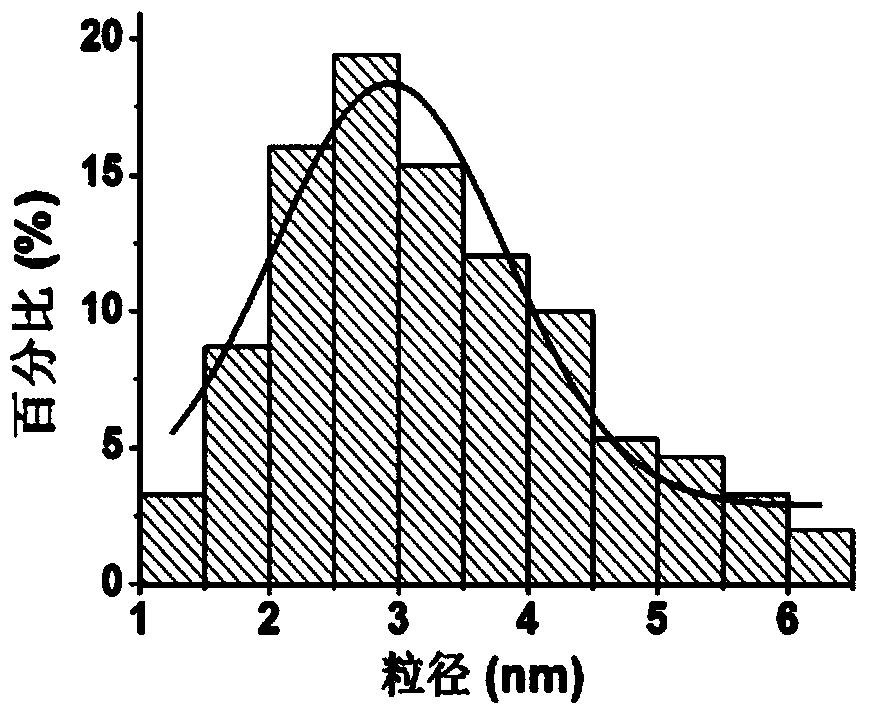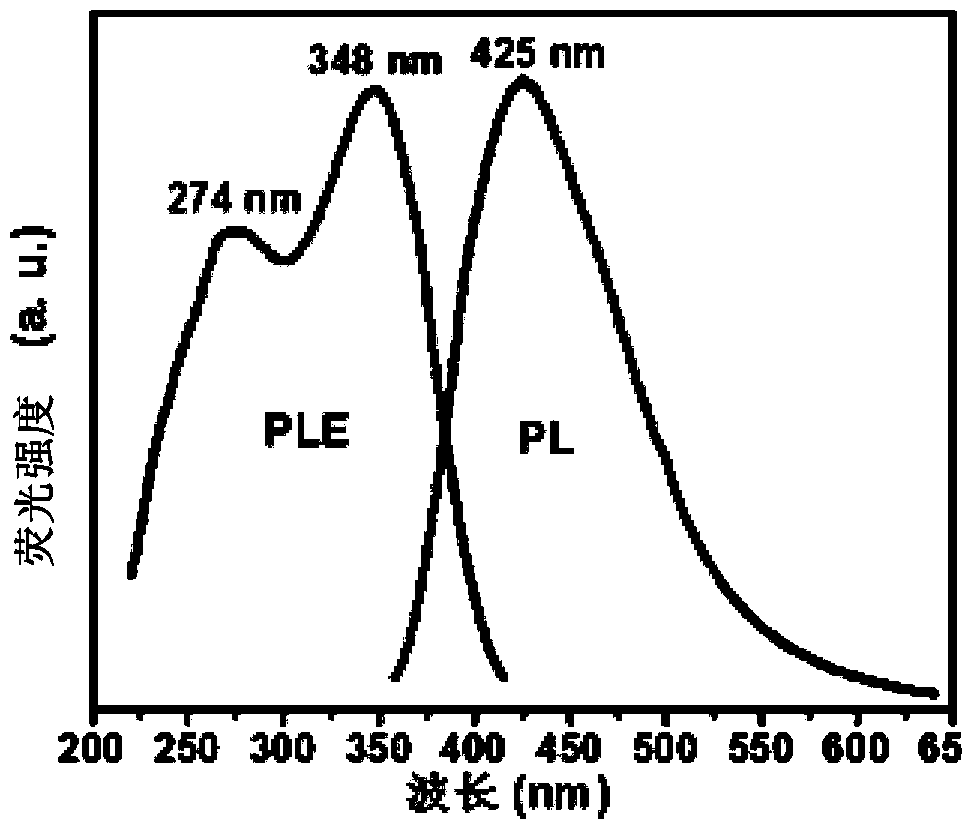Nitrogen-doped fluorescent carbon-dot and carbon-dot graphene composite as well as production method and application thereof
A fluorescent carbon dot, nitrogen doping technology, applied in chemical instruments and methods, luminescent materials, chemical/physical processes, etc., can solve the problems of low calorific value, high nitrogen content, large pollution, etc., and achieve a large steady-state current , the effect of high catalytic activity and low start-up potential
- Summary
- Abstract
- Description
- Claims
- Application Information
AI Technical Summary
Problems solved by technology
Method used
Image
Examples
preparation example Construction
[0044] In a preferred embodiment of the present invention, regarding the preparation method of nitrogen-doped fluorescent carbon dots, the specific steps are as follows:
[0045] 1. Crush and grind the coal with high nitrogen content, and sieve it to below 200 mesh. The sieve used is a Taylor sieve. Dry it overnight in an oven at 110°C. Take an appropriate proportion of coal powder and coal tar binder, fully knead and stir Uniform, extruded into a rod shape with a diameter of 10mm under the condition of 1-5MPa, and carbonized for 2 hours at 500-1500°C in nitrogen or argon;
[0046] 2. Prepare 0.05-0.2mol / L NaOH solution as the electrolyte, then add 0.1-1mol / L ammonia water, use the above-mentioned coal-based carbon rod as the anode, the platinum sheet as the counter electrode, and the calomel electrode as the reference electrode. Under the bias condition of 2-15V, react for 2-6 hours, collect the electrolyte solution containing a large number of carbon dots, use a 3500Da dialy...
Embodiment 1
[0065] 1. Preparation of nitrogen-doped carbon dots: crush and grind anthracite with high nitrogen content, sieve it to below 200 mesh, dry it in an oven at 110°C overnight, take 100g of coal powder, 50g of coal tar, fully knead, and stir evenly. Extruded into rods with a diameter of 10mm under the condition of 1MPa, carbonized at 900°C in nitrogen for 2 hours; prepared 0.1mol / L NaOH solution as the electrolyte, containing 0.2mol / L ammonia water, and the above coal-based carbon rods As the anode, the platinum sheet is the counter electrode, and the calomel electrode is the reference electrode. React for 2 hours under a bias voltage of 5V, collect the electrolyte containing a large number of carbon dots, and dialyze the electrolyte with a 3500Da dialysis bag to obtain nitrogen. doped carbon dots.
[0066] 2. Catalyst preparation: nitrogen-doped carbon dots and graphite oxide were prepared into a mixed solution at a mass ratio of 1:10, and hydrothermally treated at 180°C for 12 ...
Embodiment 2
[0077] 1. Preparation of nitrogen-doped carbon dots: crush and grind bituminous coal with high nitrogen content, sieve it to below 200 mesh, dry it in an oven at 110°C overnight, take 100g of coal powder and 20g of coal tar binder, and fully knead them. Stir evenly, extrude into a rod shape with a diameter of 10mm under the condition of 5MPa, and carbonize under the condition of 500°C in argon for 2 hours; prepare 0.05mol / L NaOH solution as the electrolyte solution, which contains 0.1mol / L ammonia water, and the above The coal-based carbon rod is used as the anode, the platinum sheet is used as the counter electrode, and the calomel electrode is used as the reference electrode. React for 6 hours under a bias voltage of 2V, collect the electrolyte containing a large number of carbon dots, and use a 3500Da dialysis bag to remove the electrolyte. , that is, nitrogen-doped carbon dots are obtained.
[0078] 2. Preparation of catalyst: Mix nitrogen-doped carbon dots and graphite ox...
PUM
| Property | Measurement | Unit |
|---|---|---|
| Particle size | aaaaa | aaaaa |
| Average size | aaaaa | aaaaa |
| The average particle size | aaaaa | aaaaa |
Abstract
Description
Claims
Application Information
 Login to View More
Login to View More - R&D
- Intellectual Property
- Life Sciences
- Materials
- Tech Scout
- Unparalleled Data Quality
- Higher Quality Content
- 60% Fewer Hallucinations
Browse by: Latest US Patents, China's latest patents, Technical Efficacy Thesaurus, Application Domain, Technology Topic, Popular Technical Reports.
© 2025 PatSnap. All rights reserved.Legal|Privacy policy|Modern Slavery Act Transparency Statement|Sitemap|About US| Contact US: help@patsnap.com



